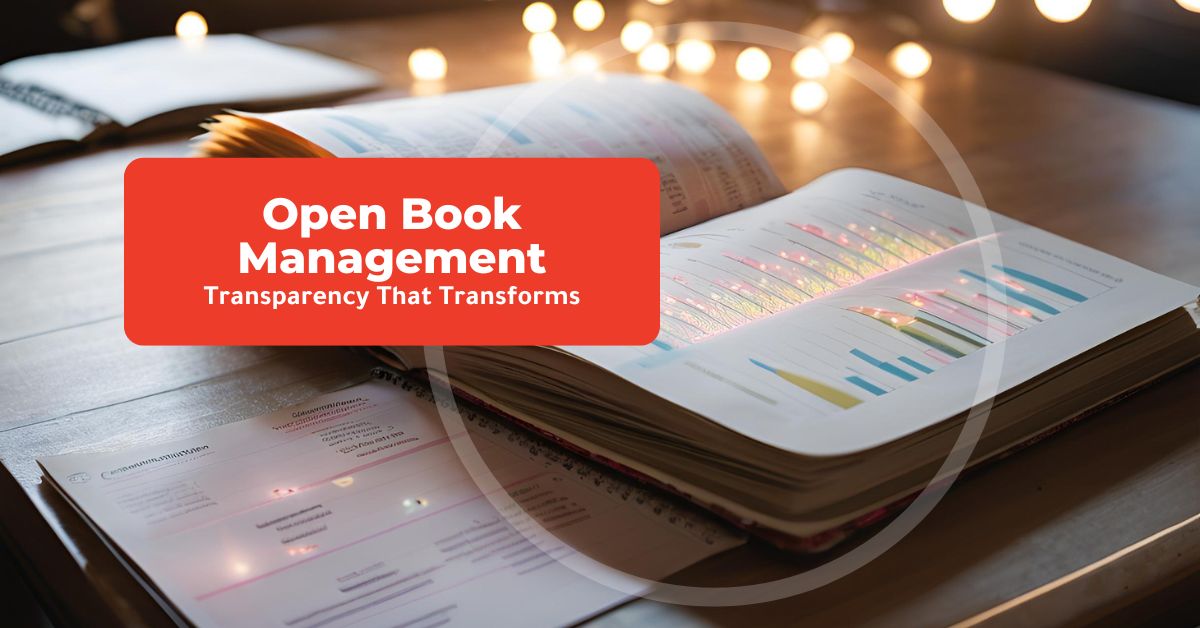Open Book Management: Financial Transparency that Transforms
Apr 9, 2025
Most organizations are built on a financial divide. Executives have access to numbers, strategy, and context – while the rest of the company is left in the dark. Frontline employees are expected to deliver results without understanding how their actions contribute to the bigger picture. This disconnect leads to disengagement, misalignment, and missed opportunities.
Open Book Management changes that. It makes financial literacy part of a company’s culture and invites every person in the business to take ownership of outcomes.
Understanding the Flow of Money
Open Book Management functions to help people at every level of the business understand how money flows through the company and how their actions directly impact profitability.
The thinking is pretty simple: whether you’re managing a warehouse, developing software, or driving a forklift, your decisions either add to or subtract from the bottom line. Teaching people to see those connections can improve performance by creating a spirit of shared ownership and innovation.
As Steve Baker of The Great Game of Business puts it: “What if we were to invite people to understand more about how an organization makes money and generates cash… and how they help those numbers get better?”
That’s the foundation of Open Book Management: giving people the knowledge and context they need to make smarter decisions, take pride in their contributions, and align their work with the company’s goals.
Making Financials Understandable
For Open Book Management to work, financial education must be accessible. That doesn’t mean dumbing things down. It’s explaining them financials in ways that connect to daily work.
ProCFO Vaughn Henson compares this to when he was learning some basic stick welding and a friend with a lot ofwelding experience started “teaching” him. “He started going into the science and the metallurgy of welding, and there’s 20 different types of welding,” he recalls. “I just wanted to make two pieces fit together.”
Employees don’t need to understand every nuance of deferred revenue or accruals. They need to know which numbers matter, why the numbers matter, how they’re affected, and what role they play.
This means no hiding behind jargon and buzzwords. Instead of teaching accounting, you teach cause and effect, like when a truckload is delayed, a part gets returned, or a software bug causes rework.
The CFO’s role can shift here too, becoming something of a translator and coach – someone who can connect the dots between operations and outcomes with enough of the right information to make an impact. People will rise to the occasionwhen they’re respected and trusted with the books open to them.
Accountability with Empathy
When everyone understands the financials, accountability becomes part of the culture. Conversations shift from blame to solutions. Employees feel empowered to speak up when something isn’t working and responsible for fixing it.
It also opens the door to healthy tension. If a team misses a deadline that impacts revenue, the warehouse team should be able to ask why. Not to point fingers but to understand the impact and to help prevent it in the future.
These conversations can feel uncomfortable at first. That’s the point. They create clarity, encourage collaboration, and build trust.
The Strategic CFO’s Role
In an Open Book company, the CFO plays a broader role to help guide culture, communication, and innovation.
That includes:
- Leading financial literacy efforts
- Facilitating cross-functional understanding
- Identifying small ideas with big impact
- Supporting the flow of ideas and experimentation
- Interpreting data, markets, and trends for broader strategy
When people start thinking like owners, the CFO becomes the person who keeps the bigger picture in focus, communicating context and confidence in every decision.
Innovation from the Front Lines
Often, one of the biggest surprises for companies that embrace Open Book Management is where innovation comes from.
When people understand how their ideas impact results, they start looking for ways to improve processes, cut costs, and drive value. There’s almost a gamification of optimizaton.
Vaughn worked with an organization where a team saved a hundred thousand dollars by identifying which pallets could be reused instead of discarded – an insight that came from the floor, not the boardroom. Another team developed AI-powered sorting software on a budget simply because someone cared enough to build something better.
Examples like these are the natural byproduct of a culture that values contribution and invites participation.
Why Open Book Matters More Than Ever
The old way of working – where leadership holds all the information and employees are just executors – no longer works. Today’s organizations need adaptability, engagement, and collective ownership.
Open Book Management addresses this need, redefining how people show up to work.
They understand why their job matters. They speak a shared language. They take initiative and contribute ideas. And they help drive the business forward.
Adopting Open Book is a process that takes time, consistency, and leadership. But the return is worth it when you can lead a company where everyone – from the loading dock to the boardroom – understands how to win.


